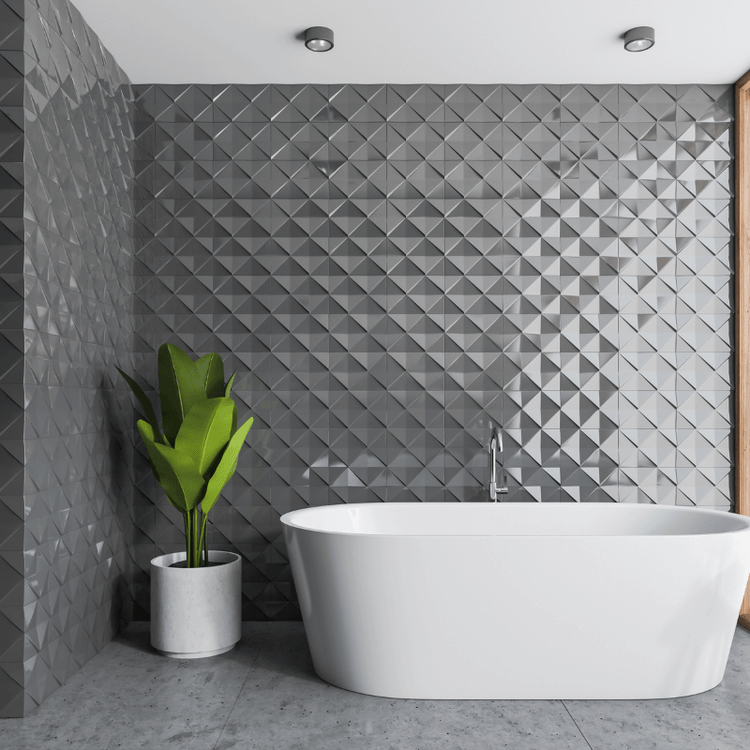
Embracing Freedom: Considerations for Freestanding Bathroom Fixtures
The modern bathroom has evolved from a purely utilitarian space to a sanctuary for relaxation and self-care. In this transformation, freestanding fixtures have become a popular choice, adding a touch of elegance and sophistication to the bathroom environment. Freestanding bathtubs, sinks, and vanities not only serve practical purposes but also contribute significantly to the overall aesthetics of the space. In this comprehensive guide, we'll explore the considerations to keep in mind when opting for freestanding bathroom fixtures.
Space Utilization
One of the primary advantages of freestanding fixtures is their ability to maximize space utilization. Unlike built-in fixtures that may be constrained by walls or existing structures, freestanding elements can be strategically placed to optimize both visual and functional aspects of the bathroom. This flexibility is particularly valuable in smaller bathrooms, where the openness created by freestanding fixtures can make the space appear larger.
Consider the layout of your bathroom and identify areas where a freestanding fixture could enhance the overall design while maintaining or improving functionality. Freestanding fixtures can serve as focal points, creating a sense of luxury and openness in the room.
Design and Style Choices
Freestanding fixtures come in a wide array of designs and styles, allowing homeowners to express their personal taste and preferences. Whether you're drawn to contemporary minimalism, classic elegance, or rustic charm, there's a freestanding option to suit your style.
When selecting freestanding fixtures, think about the overall design theme of your bathroom. For a cohesive look, consider matching or complementing the style of the freestanding fixture with other elements in the room, such as flooring, wall color, and accessories. This harmonious design approach creates a visually appealing and unified bathroom space.
Material Selection
The material of freestanding fixtures plays a crucial role in determining their durability, maintenance requirements, and overall aesthetic appeal. Common materials for freestanding fixtures include acrylic, cast iron, stone, and various metals. Each material has its unique characteristics, and the choice depends on factors such as budget, personal preference, and the desired look and feel.
For example, cast iron freestanding bathtubs are known for their durability and heat-retaining properties, while acrylic options are lighter and may offer more design versatility. Consider the maintenance requirements of the chosen material, ensuring that it aligns with your lifestyle and the level of upkeep you're willing to invest in.
Placement and Installation
The placement of freestanding fixtures is a critical consideration that can impact both the visual appeal and functionality of the bathroom. Freestanding bathtubs, for instance, can be positioned as a centerpiece or against a wall, depending on the available space and the desired aesthetic.
When it comes to installation, freestanding fixtures often require different considerations than built-in options. Ensure that the floor can support the weight of the fixture and that the necessary plumbing and electrical connections are accessible. Professional installation may be required, especially for fixtures like freestanding tubs that involve complex plumbing.
Practical Considerations: Cleaning and Maintenance
While freestanding fixtures are admired for their aesthetic appeal, it's essential to consider the practical aspects of cleaning and maintenance. Freestanding fixtures, particularly those with intricate designs or unique shapes, may require more attention during cleaning. Consider factors such as ease of access to the floor space around the fixture and whether the design allows for straightforward cleaning.
Choose materials and finishes that are resistant to water stains, corrosion, and other issues that may arise in a bathroom environment. Regular maintenance is key to preserving the beauty and functionality of freestanding fixtures, so factor in the time and effort you're willing to invest in keeping these elements in top condition.
Cost Considerations
While freestanding fixtures can add a touch of luxury to your bathroom, it's crucial to consider the associated costs. Freestanding options often come with a higher price tag compared to built-in fixtures, and this cost can vary based on factors such as materials, brand, and design complexity.
Set a realistic budget before embarking on the selection process, and explore options that align with your financial constraints. Keep in mind that while freestanding fixtures may have a higher upfront cost, they can also enhance the overall value and appeal of your home, making them a worthwhile investment.
Conclusion
Freestanding bathroom fixtures have the power to transform your bathroom into a stylish and functional retreat. By carefully considering aspects such as space utilization, design and style choices, material selection, placement and installation, practical considerations, and cost considerations, you can make informed decisions that align with your preferences and enhance the overall aesthetics of your bathroom. Embrace the freedom that freestanding fixtures offer, and let your bathroom become a sanctuary that reflects your personal style and promotes relaxation and rejuvenation.

